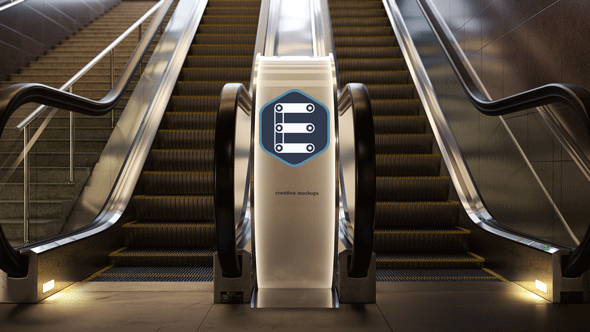Due to the lack of energy and power resources, the operation of escalators under no-load condition has become a huge waste. Therefore, we envisage that if the escalator can be automatically detected to be empty for a period of time, the escalator will be instructed to slow down from full speed to half speed. In the relatively infrequent places where people come in and out, based on the above ideas, after the escalator detects the no-load status for a period of time, it will slow down gradually from full speed to stop operation, so as to save about 30% ~ 50% of electricity. When a passenger steps on the bed cover of an escalator, the escalator can start running at full speed by automatically sensing the arrival of the passenger through a photoelectric sensor set at the entrance of the escalator cover.
Working principle:
- The core parts of the escalator are two chains, which rotate around two pairs of gears. At the top of the escalator, an electric motor drives the transmission gear to rotate the chain ring. A typical escalator USES a 100 horsepower engine to turn the gears. The engine and chain systems are mounted in trusses, which are metal structures that extend from floor to floor.
- Unlike the conveyor belt moving a plane, the chain ring moves a set of steps. The most interesting thing about escalators is the way they move. The steps remain level as the chain moves. At the top and bottom of the escalator, the steps fold into a platform. This makes it easier to get up and down the escalator.
- Each step of the escalator has two sets of wheels, which rotate along two separate tracks. The top gear (wheels near the top of the steps) is connected to a rotating chain and is pulled by a drive gear located at the top of the escalator. The other wheels simply slide along the track behind the first wheels.
- The two tracks are separated from each other, so that each step can be kept level. At the top and bottom of the escalator, the track is in a horizontal position, flattening the steps. There are a series of grooves inside each step to connect the front and rear steps during the leveling process.
- Besides rotating the main link, the motor in the escalator can also move the handrails. The armrest is just a rubber conveyor belt that circulates around a series of wheels. The conveyor belt is precisely configured to move at exactly the same speed as the steps, making the rider feel smooth.
- The escalator system is not capable of lifting people up dozens of floors as elevators do, but it is suitable for providing short distance transportation. This is because of the high load rate of escalators. When the elevator is full, no one else can get on until it reaches the designated floor and returns. On escalators, as long as one person reaches the top, it makes room for others.


